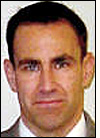Wastech Services, one of the largest private garbage haulers in British Columbia’s greater Vancouver area, is using an RFID solution to help track its trucks.
The company adopted the RFID system to manage its vehicles better as they travel between four regional transfer stations, two landfill sites and an incinerator, as well as corresponding holding, cleaning and refueling stations. “We didn’t have a clear picture where the trucks and trailers were,” says Wastech’s manager of software development, Sandy Lawson.
Previously, the trucks were not tracked at any of their stops throughout the day, with the exception of when they were weighed at the landfill before dumping their load. Wastech needed a system to help track how long drivers took throughout their routes, ensure that cleaning and other procedures were carried out and determine if trailers and tractors were where they were scheduled to be. It also needed a way to discern where drivers were being delayed, and where Wastech might need to deploy more trucks to get the job done.
Wastech researched RFID- and GPS-based solutions and found RFID to be less expensive but capable of meeting its needs. “In our environment, the routes were not that difficult; we don’t have a very diverse network,” Lawson explains. Instead, Wastech needed only to record a truck’s arrival and departure times at each station where its trailer was loaded, unloaded or cleaned, and where it was refueled.
With the purchase of five 916 MHz interrogators (readers) and 600 active RFID tags from Identec Solutions, located in Kelowna, B.C., Wastech has been able to track the movement of 300 tractors and trailers. The company uses a reporting software application it developed, says Lawson, to track where the trailer has been and currently is. “We have built a higher-level event record that integrates with scale information to provide a complete picture of when trips began and when they completed,” he says.
Wastech takes Vancouver-area trash to its own landfill, located in the village of Cache Creek. There, it dumps approximately 500,000 tons of garbage a year. It also unloads its trucks at an incinerator run by a private operator, and at a landfill owned and operated by the city of Vancouver. The company installed four RFID interrogators (readers) at its Cache Creek site—one at the landfill itself, one at an adjacent holding yard and two at a refueling station—and deployed another reader at the Vancouver city landfill. According to Larson, Wastech did not install any interrogators at the transfer sites due to logistical problems, or at the incinerator site.
Each truck has two RFID tags attached to its side with metal screws. The tag on the left has a different ID number than the one on the right, allowing Wastech to differentiate between arrivals and departures. Trailers have their own tags screwed into both sides.
When a truck is about to leave a transfer station after picking up a load of trash, its weight and the RFID tag numbers of the truck and trailer are recorded manually into the Wastech data reporting system. The tags are read when the truck and trailer arrive at a landfill site choke site, and again when they depart. In this manner, the company can track how long the vehicle remains at the location. After the trailer dumps its load, the truck goes to a holding facility, where it waits to be refueled and have its trailer cleaned. RFID readers then capture the tag identification data again. Once the refueling and cleaning are completed, the driver takes the rig to a separate site to have woodchips loaded onto the trailer for delivery to customers in Vancouver.
Wastech claims the system improves its ability to monitor the productivity of its trucks and drivers, and to assess approximately where trucks are at any given time. The company would not reveal how much its RFID system cost, or how much money it saves annually by using the system.
The RFID system has not changed the drivers’ routine, Lawson says, with one exception: At the Vancouver city landfill, drivers had been required to wait anywhere from 10 minutes to a half hour in line before getting their truck and trailer weighed by a manual scale. With the reader installed, Wastech drivers can bypass the line and also access the landfill after hours since they do not need to use the manual scale. Instead of having its trucks weighed by the landfill’s scale, Wastech provides the city of Vancouver with data that includes time and weight for vehicles entering and leaving the site.
“It’s a win-win situation,” Lawson says, since it saves Wastech drivers time and also reduces the number of vehicles queuing at the manual scales. He calls the system “reasonably priced” when compared with the cost of one using GPS technology.
“It’s simple,” says Identec’s vice president of sales and marketing, Roderick O’Keefe. “It’s a gate-access-type solution.” According to O’Keefe, the simplicity of the system, compared with a GPS solution, is the strongest selling point for end users in waste management.
O’Keefe says Identec is working on similar pilot programs in Palm Beach, Florida and California with its partner Genesta, a Houston-based systems integrator focusing on data collection solutions. “We’re expecting, in 2006, to have two or three new projects,” he says.


